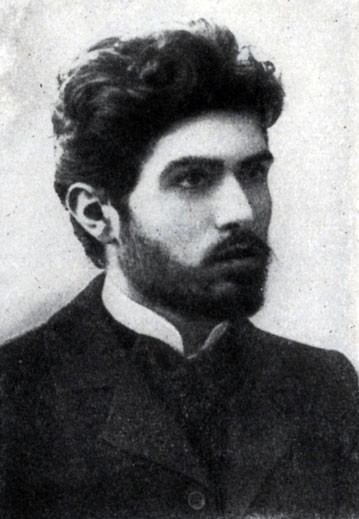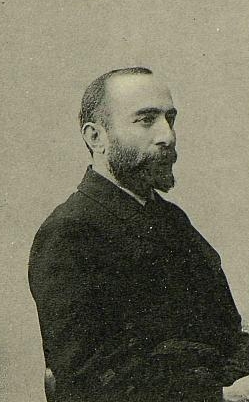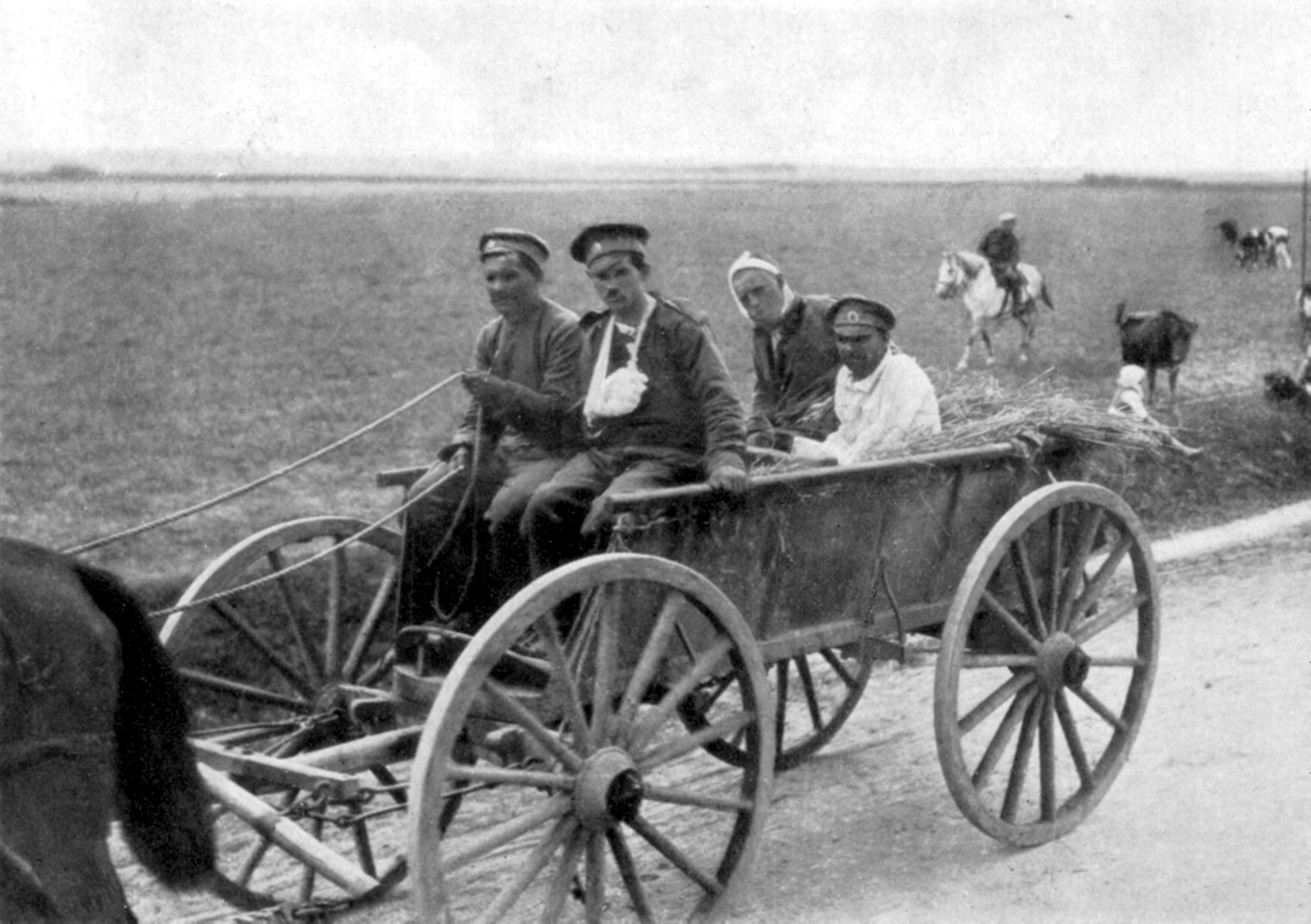|
March Events
The March Days or March Events () was a period of inter-ethnic strife and clashes which took place between 30 March – 2 April 1918 in the city of Baku and adjacent areas of the Baku Governorate of the Transcaucasian Commissariat. Facilitated by a political power struggle between Bolsheviks with the support of the Armenian Revolutionary Federation (Dashnaktsutiun) on one side and the Azerbaijani Musavat Party on another, the events led to rumours of a possible Muslim revoltFiruz Kazemzadeh. Struggle For Transcaucasia (1917—1921), New York Philosophical Library, 1951.Tadeusz Swietochowski. Russian Azerbaijan, 1905—1920: The Shaping of a National Identity in a Muslim Community. Cambridge University Press, 2004. , 9780521522458, pp 116—118The truly tragic turn of events came after acceptance of the ultimatum, when the Dashnakist allies of the Bolsheviks took to looting, burning, and killing in the Muslim sections of the city on the part of Bolshevik and Dashnak forces and ... [...More Info...] [...Related Items...] OR: [Wikipedia] [Google] [Baidu] |
Armenian–Azerbaijani War (1918–1920)
The Armenian–Azerbaijani war (1918–1920) was a conflict that took place in the South Caucasus in regions with a mixed Armenian- Azerbaijani population, broadly encompassing what are now modern-day Azerbaijan and Armenia. It began during the final months of World War I and ended with the establishment of Soviet rule. The conflict took place against the backdrop of the Russian Civil War and the partition of the Ottoman Empire. Mutual territorial claims, made by the newly formed Azerbaijan Democratic Republic and Republic of Armenia, led to their respective support for Azerbaijani and Armenian militias in the disputed territories. Armenia fought against Azerbaijani militias in the Erivan Governorate of the former Russian Empire, while Azerbaijan fought Armenian claims to the Karabakh region. The war was characterized by outbreaks of massacres and ethnic cleansing (such as the March Days, the September Days, the Shusha massacre, and more broadly, the Massacres of Azerbai ... [...More Info...] [...Related Items...] OR: [Wikipedia] [Google] [Baidu] |
Civil War
A civil war is a war between organized groups within the same Sovereign state, state (or country). The aim of one side may be to take control of the country or a region, to achieve independence for a region, or to change government policies.James Fearon"Iraq's Civil War" in ''Foreign Affairs'', March/April 2007. For further discussion on civil war classification, see #Formal classification, the section "Formal classification". The term is a calque of Latin which was used to refer to the various Roman civil wars, civil wars of the Roman Republic in the 1st century BC. Most modern civil wars involve intervention by outside powers. According to Patrick M. Regan in his book ''Civil Wars and Foreign Powers'' (2000) about two thirds of the 138 intrastate conflicts between the end of World War II and 2000 saw international intervention. A civil war is often a high-intensity conflict, often involving Regular army, regular armed forces, that is sustained, organized and large-scale. C ... [...More Info...] [...Related Items...] OR: [Wikipedia] [Google] [Baidu] |
Transcaucasian Democratic Federative Republic
The Transcaucasian Democratic Federative Republic (TDFR; 22 April – 28 May 1918) was a short-lived sovereign state, state in the Caucasus that included most of the territory of the present-day Armenia, Azerbaijan and Georgia (country), Georgia, as well as parts of Russia and Turkey. The state lasted only for a month before Georgian Declaration of Independence, 1918, Georgia declared independence, followed shortly after by Declaration of Independence of Armenia (1918), Armenia and Declaration of Independence (Azerbaijan), Azerbaijan. The region that formed the TDFR had been part of the Russian Empire. As the empire dissolved during the 1917 February Revolution and a Russian Provisional Government, provisional government took over, a similar body, called the Special Transcaucasian Committee (Ozakom), did the same in the Caucasus. After the October Revolution and rise of the Bolsheviks in Russia, the Transcaucasian Commissariat replaced the Ozakom. In March 1918, as t ... [...More Info...] [...Related Items...] OR: [Wikipedia] [Google] [Baidu] |
Tbilisi
Tbilisi ( ; ka, თბილისი, ), in some languages still known by its pre-1936 name Tiflis ( ), ( ka, ტფილისი, tr ) is the Capital city, capital and List of cities and towns in Georgia (country), largest city of Georgia (country), Georgia, located on the banks of the Kura (Caspian Sea), Kura River. With around 1.2 million inhabitants, it contains almost one third of the country's population. Tbilisi was founded in the fifth century Anno Domini, AD by Vakhtang I of Iberia and has since served as the capital of various Georgian kingdoms and republics. Between 1801 and 1917, then part of the Russian Empire, it was the seat of the Caucasus Viceroyalty (1801–1917), Caucasus Viceroyalty, governing both the North Caucasus, northern and the South Caucasus, southern sides of the Caucasus. Because of its location at the crossroads between Europe and Asia, and its proximity to the lucrative Silk Road, throughout history, Tbilisi has been a point of contention ... [...More Info...] [...Related Items...] OR: [Wikipedia] [Google] [Baidu] |
October Revolution
The October Revolution, also known as the Great October Socialist Revolution (in Historiography in the Soviet Union, Soviet historiography), October coup, Bolshevik coup, or Bolshevik revolution, was the second of Russian Revolution, two revolutions in Russia in 1917. It was led by Vladimir Lenin's Bolsheviks as part of the broader Russian Revolution of 1917–1923. It began through an insurrection in Petrograd (now Saint Petersburg) on . It was the precipitating event of the Russian Civil War. The initial stage of the October Revolution, which involved the assault on Petrograd, occurred largely without any casualties. The October Revolution followed and capitalized on the February Revolution earlier that year, which had led to the abdication of Nicholas II and the creation of the Russian Provisional Government. The provisional government, led by Alexander Kerensky, had taken power after Grand Duke Michael Alexandrovich of Russia, Grand Duke Michael, the younger brother of ... [...More Info...] [...Related Items...] OR: [Wikipedia] [Google] [Baidu] |
Russian Provisional Government
The Russian Provisional Government was a provisional government of the Russian Empire and Russian Republic, announced two days before and established immediately after the abdication of Nicholas II on 2 March, O.S. New_Style.html" ;"title="5 March 1917, New Style">N.S. during the February Revolution. The intention of the provisional government was the organization of elections to the Russian Constituent Assembly and its convention. The provisional government, led first by Prince Georgy Lvov and then by Alexander Kerensky, lasted approximately eight months, and ceased to exist when the Bolsheviks gained power in the October Revolution in October ovember, N.S.1917. According to Harold Whitmore Williams, the history of the eight months during which Russia was ruled by the Provisional Government was the history of the steady and systematic disorganization of the army. The Provisional Government was a caretaker government, with its political system and the status of the monarc ... [...More Info...] [...Related Items...] OR: [Wikipedia] [Google] [Baidu] |
South Caucasus
The South Caucasus, also known as Transcaucasia or the Transcaucasus, is a geographical region on the border of Eastern Europe and West Asia, straddling the southern Caucasus Mountains. The South Caucasus roughly corresponds to modern Armenia, Georgia (country), Georgia, and Azerbaijan, which are sometimes collectively known as the Caucasian States. The total area of these countries measures about . The South Caucasus and the North Caucasus together comprise the larger Caucasus geographical region that divides Eurasia. The South Caucasus is a dynamic and complex region where the three countries have pursued distinct geopolitical pathways. Geography The South Caucasus spans the southern portion of the Caucasus Mountains and their lowlands, straddling the border between the continents of Europe and Asia, and extending southwards from the southern part of the Main Caucasian Range of southwestern Russia to the Turkey, Turkish and Armenian borders, and from the Black Sea in the west ... [...More Info...] [...Related Items...] OR: [Wikipedia] [Google] [Baidu] |
Special Transcaucasian Committee
The Special Transcaucasian Committee ( Russian: Особый Закавказский Комитет ''Osobyi Zakavkazskii Komitet'' (OZaKom, Ozakom or OZAKOM)) was established on March 9, 1917, after the February Revolution, with Member of the State Duma Vasily Kharlamov as Chairman, to replace the Imperial Viceroy Grand Duke Nikolai Nikolaevich and with special instruction to establish civil administrations in areas occupied in the course of the war on the Caucasian front by the Russian Provisional Government in the Transcaucasus as the highest organ of the civil administrative body. Commissars were appointed for the Terek Oblast and the Kuban Oblast, and these as well as the Committee were to carry on relations with central government institutions through a Commissar for Caucasian Affairs in Petrograd attached to the Provisional Government. Soviets also sprang up throughout the area and, in time, organized an influential Regional Center at Tiflis Tbilisi ( ; ka, � ... [...More Info...] [...Related Items...] OR: [Wikipedia] [Google] [Baidu] |
February Revolution
The February Revolution (), known in Soviet historiography as the February Bourgeois Democratic Revolution and sometimes as the March Revolution or February Coup was the first of Russian Revolution, two revolutions which took place in Russia in 1917. The main events of the revolution took place in and near Petrograd (now Saint Petersburg), the then-capital of Russia, where long-standing discontent with the monarchy erupted into mass protests against food rationing on 23 February Old Style and New Style dates, Old Style (8 March Old Style and New Style dates, New Style). Revolutionary activity lasted about eight days, involving mass demonstrations and violent armed clashes with police and Special Corps of Gendarmes, gendarmes, the last loyal forces of the Russian monarchy. On 27 February O.S. (12 March N.S.), most of the forces of the capital's garrison sided with the revolutionaries. In the same day, the Russian Provisional Government, made up by left-leaning State Duma (Russ ... [...More Info...] [...Related Items...] OR: [Wikipedia] [Google] [Baidu] |
Azerbaijanis
Azerbaijanis (; , ), Azeris (, ), or Azerbaijani Turks (, ) are a Turkic peoples, Turkic ethnic group living mainly in the Azerbaijan (Iran), Azerbaijan region of northwestern Iran and the Azerbaijan, Republic of Azerbaijan. They are predominantly Shia Islam, Shia Muslims. They comprise the largest ethnic group in the Republic of Azerbaijan and the second-largest ethnic group in neighboring Iran and Georgia (country), Georgia. They speak the Azerbaijani language, belonging to the Oghuz languages, Oghuz branch of the Turkic languages. Following the Russo-Persian Wars of Russo-Persian War (1804–1813), 1813 and Russo-Persian War (1826–1828), 1828, the territories of Qajar Iran in the Caucasus were ceded to the Russian Empire and the Treaty of Gulistan, treaties of Gulistan in 1813 and Treaty of Turkmenchay, Turkmenchay in 1828 finalized the borders between Russia and Iran. After more than 80 years of being under the Russian Empire in the Caucasus, the Azerbaijan Democratic Re ... [...More Info...] [...Related Items...] OR: [Wikipedia] [Google] [Baidu] |
Islamic Army Of The Caucasus
The Islamic Army of the Caucasus (; Turkish: ''Kafkas İslâm Ordusu'') (also translated as ''Caucasian Army of Islam'' in some sources) was a military unit of the Ottoman Empire formed on July 10, 1918. The Ottoman Minister of War, Enver Pasha, ordered its establishment, and it played a major role during the Caucasus Campaign of World War I. Background During 1917, due to the Russian Revolution and subsequent Civil War, the Russian army in the Caucasus ceased to exist. The Russian Provisional Government's Caucasus Front formally ceased to exist in March 1918. Meanwhile, the Committee of Union and Progress moved to win the friendship of the Bolsheviks by signing the Ottoman-Russian friendship treaty (January 1, 1918). On January 11, 1918, the special decree ''On Armenia'' was signed by Lenin and Stalin which armed and repatriated over 100,000 Armenians from the former Tsar's Army to be sent to the Caucasus for operations against Ottoman interests. On January 20, 1918, Talaat ... [...More Info...] [...Related Items...] OR: [Wikipedia] [Google] [Baidu] |
September Days
The September Days () refers to a period during the Russian Civil War in September 1918 when Armenian inhabitants of Baku, Azerbaijan, were massacred by Enver Pasha's Army of Islam and their local Azeri allies when they captured the soon-to-be capital of the Azerbaijan Democratic Republic.Hovannisian. ''Armenia on the Road to Independence'', p. 227.Human Rights Watch. Playing the "Communal Card": Communal Violence and Human Rights'. New York: Human Rights Watch, 1995. According to most estimates, approximately 10,000 ethnic Armenians were killed in the violence, although some sources claim the number to be as high as 30,000.Andreopoulos, George (1997). ''Genocide: Conceptual and Historical Dimensions''. Philadelphia: University of Pennsylvania Press, , p. 236. The massacre is said by some scholars to have been carried out in retaliation for the earlier March Days, in which Dashnak and Bolshevik forces had massacred Azerbaijani inhabitants of the city in March 1918. It was the ... [...More Info...] [...Related Items...] OR: [Wikipedia] [Google] [Baidu] |










